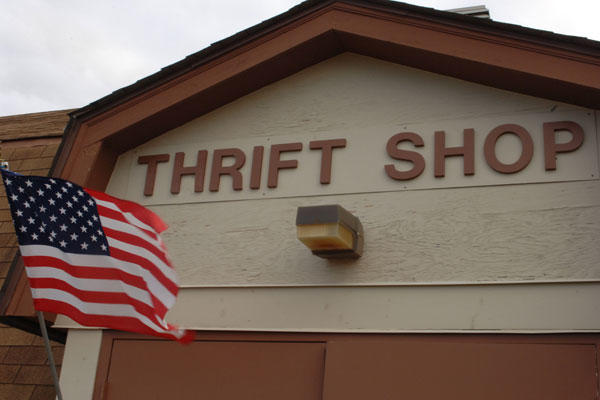Did military thrift shops jumpstart my magnetic attraction to flea markets, consignment shops, garage sales and estate sales? Absolutely!
Why? Because when I married my Army husband, we moved 11 times in his remaining 21 years of service. That’s when I discovered military thrift shops -- an ingenious solution to the frequent uprooting of military families.
The amount of household goods the military ships depends upon rank and never seems enough to take everything you own -- especially if you have five children, as we do.
Military families consign what they can’t take along from the base they leave and replace it at their next post’s thrift shop.
But besides selling practical items, these thrift storesresemble mini-world bazaars since military families consign artifacts from their stations around the world. Exotic treasures peek out from everyday merchandise, just waiting for you find them. (Some military thrift stores even gather these into a “boutique” section.)
Civilian thrift stores may be for-profit (benefiting the owners) or non-profit (benefiting hospitals, churches, symphonies or other community outreach), but military thrift shops are all non-profit. They give their local post scholarships for military children, grants to on-base scout troops, Red Cross chapters, Army Community Services, the Warrior Transition Unit and more.
Where does this money come from? Even civilian thrift and consignment shops charging 50%-50% make money. Military thrift stores keep a smaller percentage (like 25 percent for the store and 75 percent for the consignor when his items sell). But because of low overhead costs, military thrift shops not only provide a needed community service but distribute net profits to benefit their military base.
Why is the military thrift shop’s overhead low? The post typically supplies an on-post building for the shop. The staff is mostly volunteers and the few paid positions employ military dependents. Shop profit pays the hired employees and the consignor’s checks, disbursing the balance for educational and charitable activities on post.
Many military thrift shops become virtual traditions as well as a community service. For example, the shop at Fort Belvoir, Va., has operated for 60 years.
Only people with valid military ID cards can consign items at military thrift stores, but anyone who has access to the post can shop there. Besides military dependents, regular customers include servicemen (consigning uniforms is very popular) and workers from on-post facilities like the PX, commissary or hospital.
Consignments in clean and useable condition are welcome, with clothing seasonally appropriate. Inventories include collectibles, luggage, baby items, toys, clothes, sports equipment, household items, furniture, jewelry, art work and antiques. Thrifts usually open only a few days a week since they depend upon volunteer labor.
My home is filled with “treasures” from military thrift shops: a huge one-of-a-kind bamboo wind chime suspended from my ceiling above a door whispers melodically every time the door opens. Gleaming brass candlesticks, trays and accessories adorn my living room. A unique oil painting in a handsome frame hangs above my foyer credenza as well as many other unusual artifacts sprinkled throughout my home.
What will you find at your nearest military thrift shop?
-- Suzi Weinert is the author of Garage Sale Stalker, the first novel in a series of Garage Sale mysteries. A member of the Mystery Writers of America and Sisters-in-Crime, she lives with her husband, a retired Army officer, in the Virginia countryside. Garage Sale Stalker is currently available via all major online retailers, including Amazon and Barnes & Noble, on Audible, and in brick-and-mortar bookstores throughout the world.




























